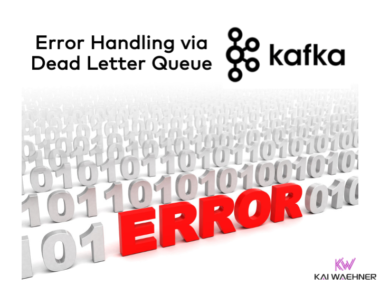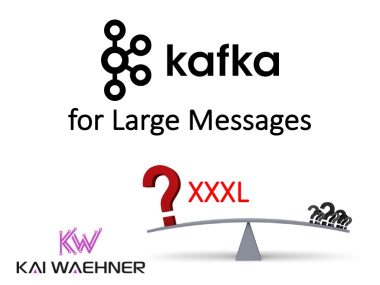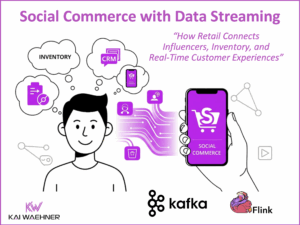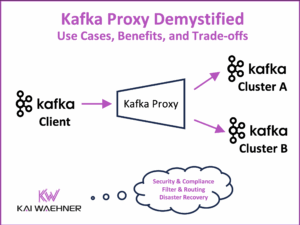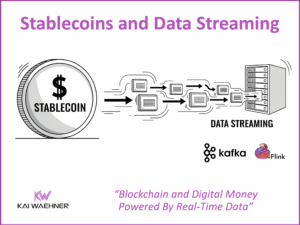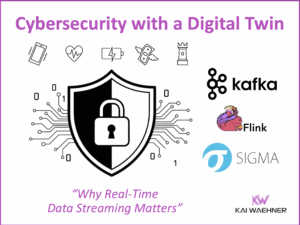The telecom industry is transforming fast. Traditional, closed mobile networks are being replaced by open, software-defined systems. Open RAN is at the center of this change—decoupling hardware and software to create more flexible, cost-effective, and innovation-friendly infrastructure. But to unlock its full value, Open RAN must be paired with real-time data processing. Data Streaming with Apache Kafka and Flink provides the foundation for turning RAN telemetry into actionable insights—at scale and with low latency. This blog post explores how cloud-native telco vendors like Mavenir and a data streaming platform like Confluent WarpStream enable telcos to modernize operations, optimize performance, and lower costs by streaming and analyzing RAN data in real time in an open, secure and compliant enterprise architecture.
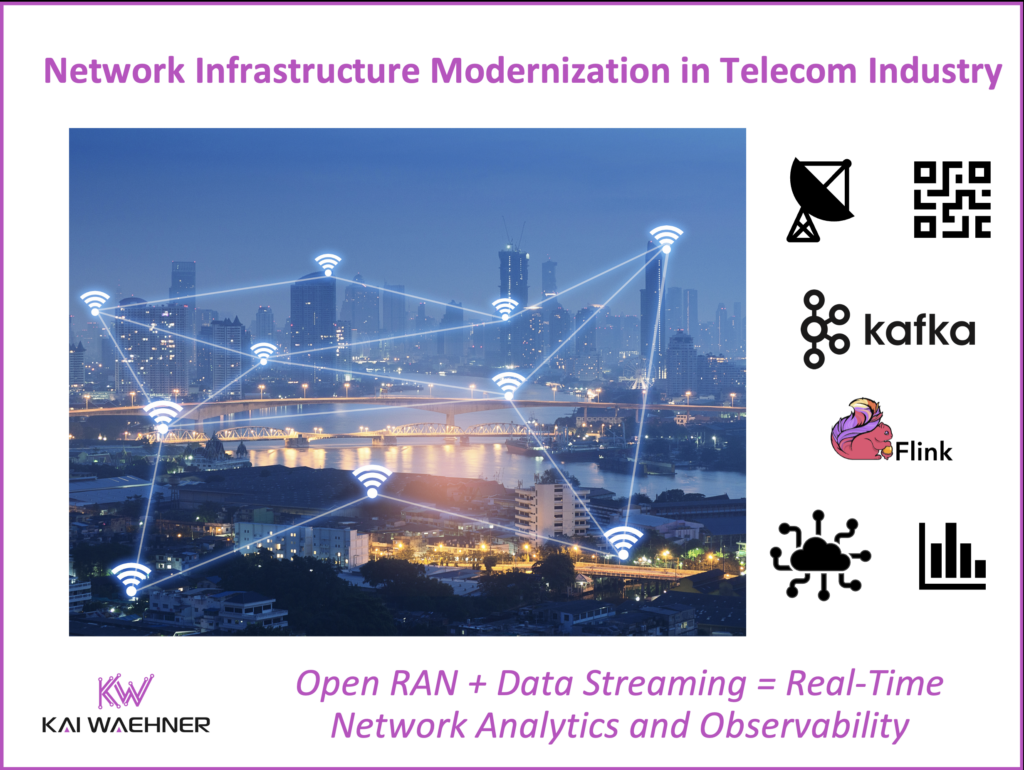
Join the data streaming community and stay informed about new blog posts by subscribing to my newsletter and follow me on LinkedIn or X (former Twitter) to stay in touch. And download my free book about data streaming use cases, including a dedicated chapter about the telecom sector.
Telco Strategy for Open RAN and Standardization
The telecom industry is undergoing a major shift. Traditional mobile networks were built on vertically integrated systems. These locked operators into single-vendor ecosystems and made upgrades slow and expensive.
Open RAN (Radio Access Network) changes this by decoupling hardware and software. It enables operators to choose best-of-breed components from different vendors. This promotes innovation, flexibility, and cost savings.
Key benefits of Open RAN:
- Vendor interoperability: mix and match hardware/software components
- Cloud-native architecture: deploy RAN software on COTS hardware or in the public cloud
- Disaggregation: break up monolithic systems into modular, manageable parts
- Faster Time to Market: enable faster onboarding of new services and upgrades via standardized interfaces
Typical Open RAN use cases include:
- Scaling mobile coverage in rural and underserved areas
- Deploying private 5G networks in industrial and enterprise settings
- Supporting urban densification and small cell expansion
- Enhancing network observability, monitoring, and automation
For these use cases to deliver value, the supporting infrastructure must be flexible, scalable, and real-time capable. This is where software vendors and event-driven data infrastructure become essential.
Greenfield operators like DISH Wireless are building fully cloud-native 5G networks from scratch using Open RAN and containerized software for maximum agility and automation. In contrast, Telefónica represents a brownfield deployment, gradually modernizing its existing infrastructure by introducing Open RAN components into a complex legacy environment—balancing innovation with operational continuity.
Software Vendors in the Open RAN Ecosystem
Several software vendors are leading the Open RAN transformation. These include:
- Mavenir (focus of this post): Cloud-native end-to-end telecom software vendor
- Rakuten Symphony: Telco-native cloud infrastructure and orchestration tools
- Parallel Wireless: RAN solutions for rural and urban networks
- Altiostar (part of Rakuten): Virtualized RAN software and Open RAN stack
- Nokia and Ericsson (in transition): Traditional vendors moving toward Open RAN capabilities
- Red Hat: Provides the Kubernetes-based infrastructure (OpenShift) used to deploy and scale Open RAN software
Mavenir stands out by offering a full telecom software stack—from Open RAN and 5G Core to IMS, messaging, and analytics. All of it is cloud-native and Kubernetes-based. Mavenir’s modular design allows for deployment in public, private, or hybrid cloud environments.
With Open RAN, Mavenir provides:
- Distributed and centralized units (DU/CU)
- RAN Intelligent Controllers (RIC)
- Integration with telco orchestration platforms and analytics systems
As telcos move toward Open RAN, vendors like Mavenir help them modernize legacy infrastructure, automate operations, and reduce total cost of ownership.
How Data Streaming Helps Open RAN for Real-Time Monitoring and Analytics
Telecom networks generate huge volumes of data—from base stations, radio units, mobile devices, and core systems. Handling this data in real time is crucial for:
- Network monitoring and observability
- Fault detection and automated response
- Quality of service analysis and SLA enforcement
- Handover optimization and traffic prediction
- Feeding AI/ML models for anomaly detection
Apache Kafka and Apache Flink became the de facto standard of this real-time processing at many network operators. Kafka enables scalable event streaming, while Flink adds powerful stream processing for stateful analytics and automation.
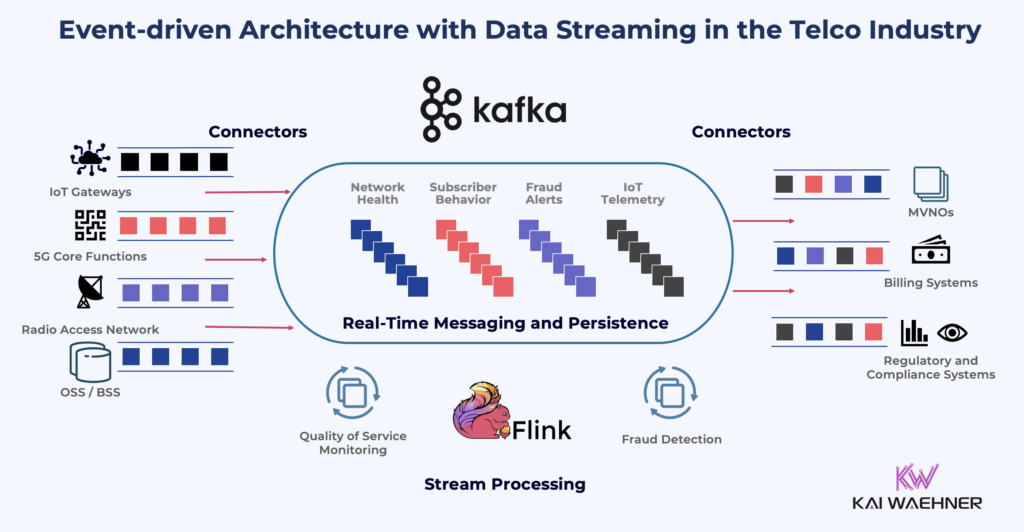
Apache Kafka as the Backbone of Scalable Open RAN Infrastructure
Apache Kafka has become a central technology in this space. It provides:
- High-throughput, real-time data ingestion from distributed network sources
- Durable, fault-tolerant messaging to decouple producers (e.g. RAN software) from consumers (analytics, OSS/BSS, AI)
- Replay capabilities for troubleshooting and forensic analysis
- Integration support via Kafka Connect for connecting to data lakes, object storage, SIEM tools, and more
Kafka is used in RAN data pipelines to capture logs, metrics, and events from radio units. It also enables streaming analytics and live dashboards for operations teams. The data flows into monitoring, AI, and automation systems that help optimize the network continuously.
Apache Flink and AI for Predictive Insights in Telecom Open RAN Systems
Apache Flink plays a critical role in processing and analyzing streaming Open RAN data in real time. While Kafka transports and buffers the data, Apache Flink adds stateful stream processing to extract insights, detect patterns, and enable intelligent automation.
Flink helps telcos:
- Detect anomalies in streaming metrics (e.g., signal degradation, interference, packet loss)
- Perform aggregations and time-windowed analysis across multiple events and network components
- Correlate events across distributed RAN elements to identify cross-site or systemic issues
- Enrich RAN data with metadata (e.g., geo-location, cell type, frequency band)
- Trigger automated actions like alerts, reconfiguration, or traffic redirection in response to network conditions
- Score data with AI/ML models in real time to predict failures, optimize energy usage, or manage QoS dynamically
Apache Flink integrates deeply with Kafka through native connectors, enabling exactly-once semantics and low-latency processing. Its support for SQL (via Flink SQL), Python (via PyFlink), and Java/Scala APIs makes it accessible to a broad range of development and analytics teams in telecom environments.
Flink’s stateful processing capabilities—including tumbling/sliding windows, event time support, joins, and process functions—are essential for real-time telecom analytics that depend on event correlation and historical context.

Together, Kafka and Flink provide a streaming-native platform for Open RAN observability, enabling telcos to act on RAN data as it arrives—without waiting for batch processes or historical logs.
Diskless Kafka for Cost-Effective Real-Time Data Streaming at Telco Scale
Traditional Kafka clusters require local disk storage, which can become expensive and operationally complex—especially in high volume telco-scale scenarios processing Gigabytes per second.
Confluent provides two major innovations to address this: WarpStream, a BYOC (Bring Your Own Cloud) Kafka service built on object storage, and Freight Clusters, a fully managed, serverless Kafka offering. Both eliminate the need for local disk and Zookeeper, enabling Kafka to operate in a diskless architecture.
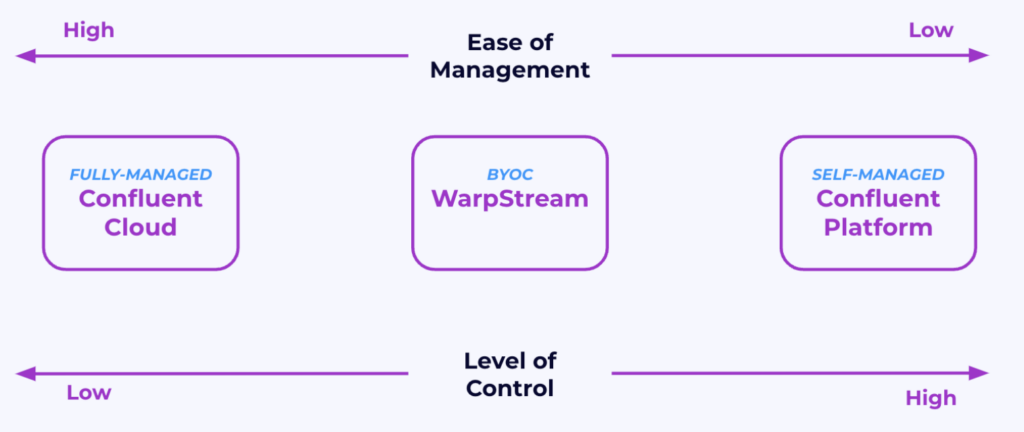
Meanwhile, the broader Kafka ecosystem is evolving: a new KIP (Kafka Improvement Proposal) “KIP-1150: Diskless Topics” has emerged, and several smaller vendors are also entering the space with diskless Kafka solutions. The next release of my data streaming landscape will focus on this evolution of the Kafka ecosystem.
Key benefits of diskless Kafka in telco RAN data use cases:
- Massive cost savings by storing event data in S3 or similar object stores
- Serverless-like simplicity with no brokers to manage
- Elastic scale to match fluctuating network traffic patterns
- Diskless ingestion allows Kafka clusters to be lightweight and efficient at the edge
- BYOC (Bring Your Own Cloud) model supports telco-grade security and compliance needs
This architecture fits perfectly in Open RAN environments, where lightweight, modular deployments are preferred. WarpStream enables telcos to run Kafka in centralized or regional clusters while keeping costs predictable and operations streamlined.
Ingesting Telemetry and Logs at Telco Scale using Confluent WarpStream into Mavenir’s Open RAN
In a typical Open RAN deployment, real-time RAN data ingestion is essential for network intelligence, monitoring, and automation. Mavenir’s Open RAN software stack generates a continuous stream of telemetry and log data that must be processed efficiently and reliably.
Apache Kafka acts as the central event streaming platform between the RAN components and downstream consumers. These events can include:
- Cell performance metrics
- Handover and session logs
- Radio interference patterns
- Hardware and software health signals
To reduce infrastructure costs, Confluent WarpStream can be used to ingest this data directly into cloud object storage. This approach eliminates the need for disk-heavy Kafka broker setups, significantly lowering compute and storage expenses—especially in high-throughput, multi-region environments.
The BYOC (Bring Your Own Cloud) deployment model supports strict network isolation and data sovereignty requirements often seen in telecom and government-regulated environments.
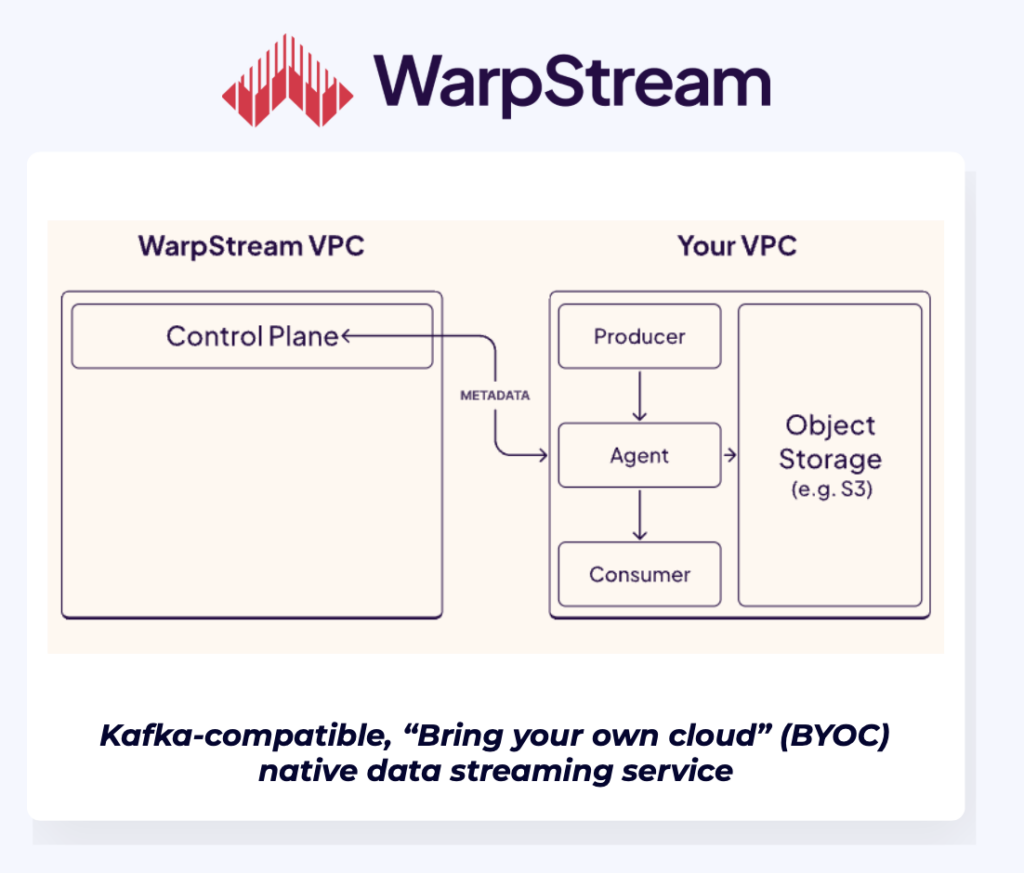
This pattern reflects the broader shift in the industry—where Kafka powers real-time observability in distributed, cloud-native Open RAN architectures, and solutions like WarpStream help scale affordably without compromising reliability or performance.
To learn more about BYOC as deployment option for security and compliance requirements (and its trade-offs), check out my dedicated article “Deployment Options for Apache Kafka: Self-Managed, Fully-Managed / Serverless and BYOC (Bring Your Own Cloud)“.
Dish Wireless: A Greenfield Cloud-Native 5G Network Powered by Kafka
Dish Wireless has successfully rolled out the first fully cloud-native, standalone 5G network in the United States. Built from the ground up as a greenfield deployment, it embraces Open RAN, containerized workloads, and virtualized infrastructure—breaking free from traditional, monolithic telco stacks.
At the core of this modern architecture is Apache Kafka. Kafka acts as the central nervous system, enabling real-time data streaming across disaggregated network components. From RAN to core and edge to cloud, Dish uses Kafka to correlate operational, business, and customer data at massive scale.
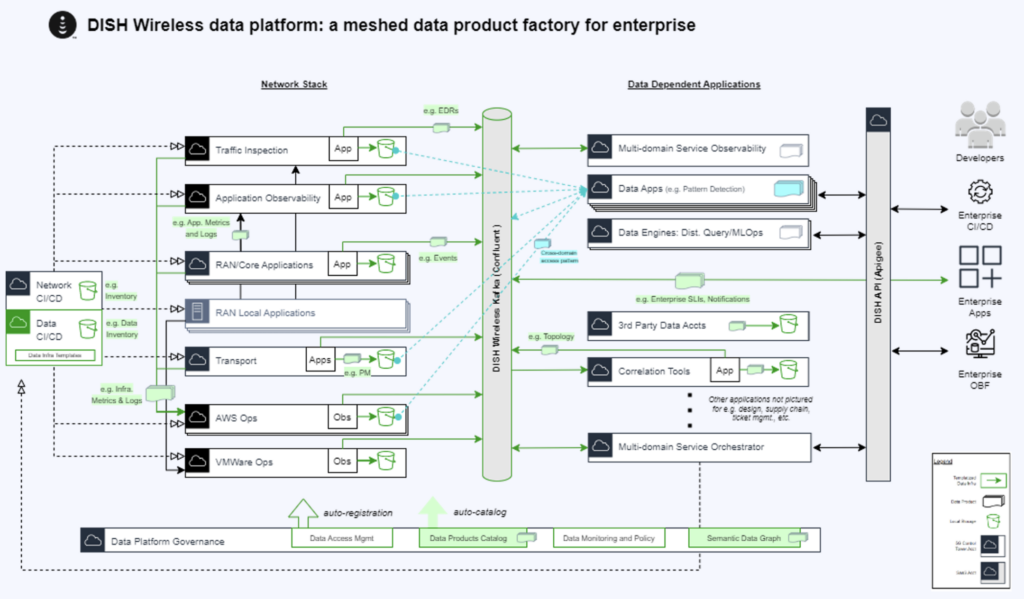
Confluent’s managed Kafka offering powers a data platform that supports observability, automation, and integration with hyperscalers like AWS. With this architecture, Dish can rapidly innovate, scale elastically, and deliver real-time digital services—backed by telemetry, analytics, and event-driven applications.
Dish Wireless is proving what’s possible when a national 5G network is built cloud-native from day one—with Kafka as its real-time backbone. More details about this success story:
Outlook: Standardization, Optimization, and Business Value in the Telecom Sector with Open RAN and Data Streaming
Telco infrastructure is being modernized through three simultaneous shifts:
- Disaggregation with Open RAN
- Cloud-native architectures with containerized network functions
- Event-driven data infrastructure with Apache Kafka and Flink
By combining these trends, operators gain:
- Vendor flexibility to avoid lock-in
- Operational efficiency through automation and observability
- Scalability to meet growing data volumes
- Faster innovation through modular, decoupled software and CI/CD practices
Vendors like Mavenir play a central role, offering telecom-grade solutions built for the cloud. Data Streaming with Kafka and Flink complements this by connecting systems with real-time, reliable data movement. Solutions like WarpStream reduce infrastructure cost without sacrificing performance or security—ideal for scaling RAN data ingestion, analytics, and AI.
Open RAN is more than a network strategy—it’s a data challenge. Every cell tower, radio unit, and mobile session produces insights. Apache Kafka enables telcos to act on these insights in real time at scale.
With vendors like Mavenir leading software innovation and platforms like Confluent WarpStream optimizing the cost of data streaming, telcos can finally build agile, open, and data-driven infrastructure.
The result: better performance, lower costs, and faster innovation across the mobile network.
For a broader look at how real-time data sharing enables new business models in the Telco industry—especially for MVNOs, IoT platforms, and enterprise customers—check out my related article: Data Streaming in the Telco Industry for MVNO Growth and Beyond.
Join the data streaming community and stay informed about new blog posts by subscribing to my newsletter and follow me on LinkedIn or X (former Twitter) to stay in touch. And download my free book about data streaming use cases, including a dedicated chapter about the telecom sector.


